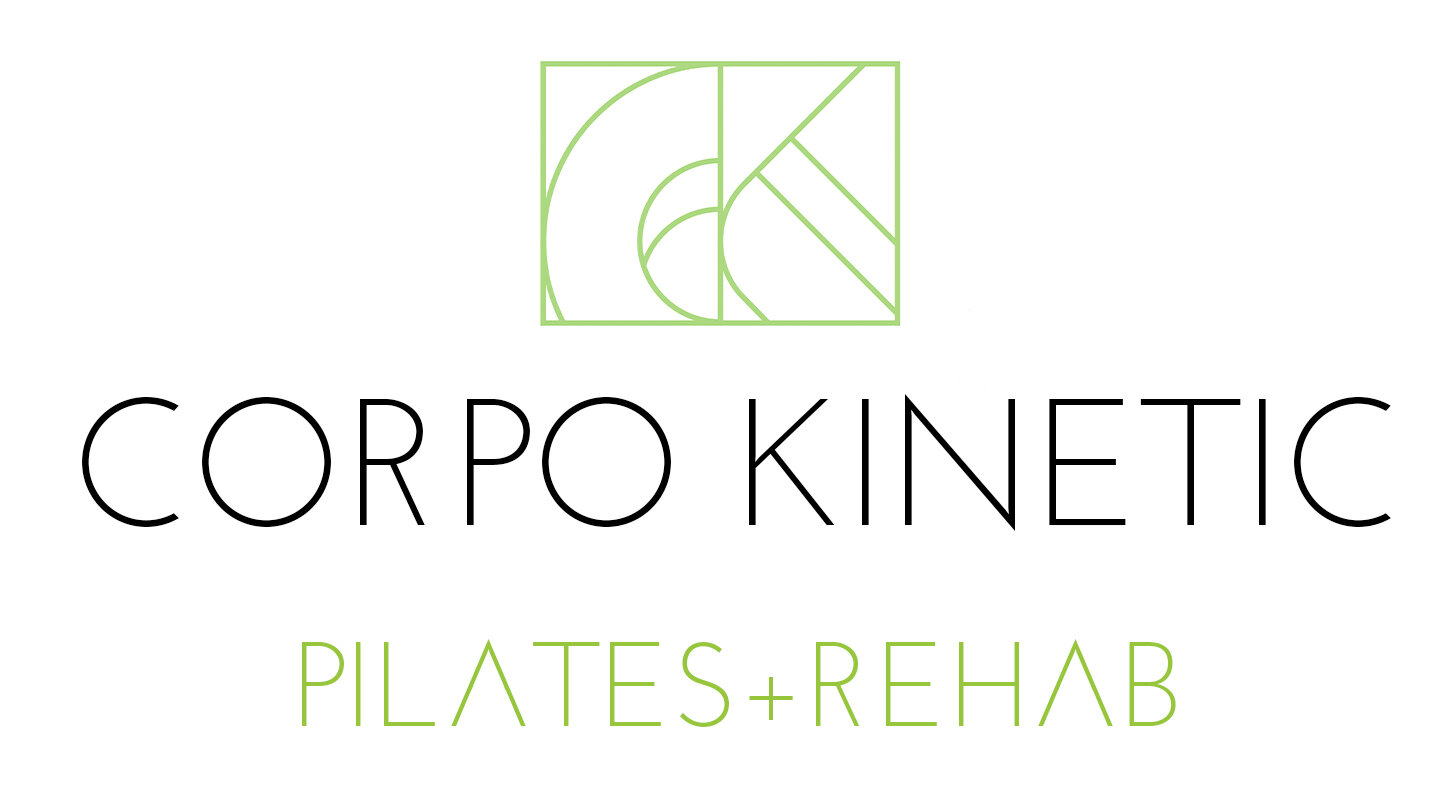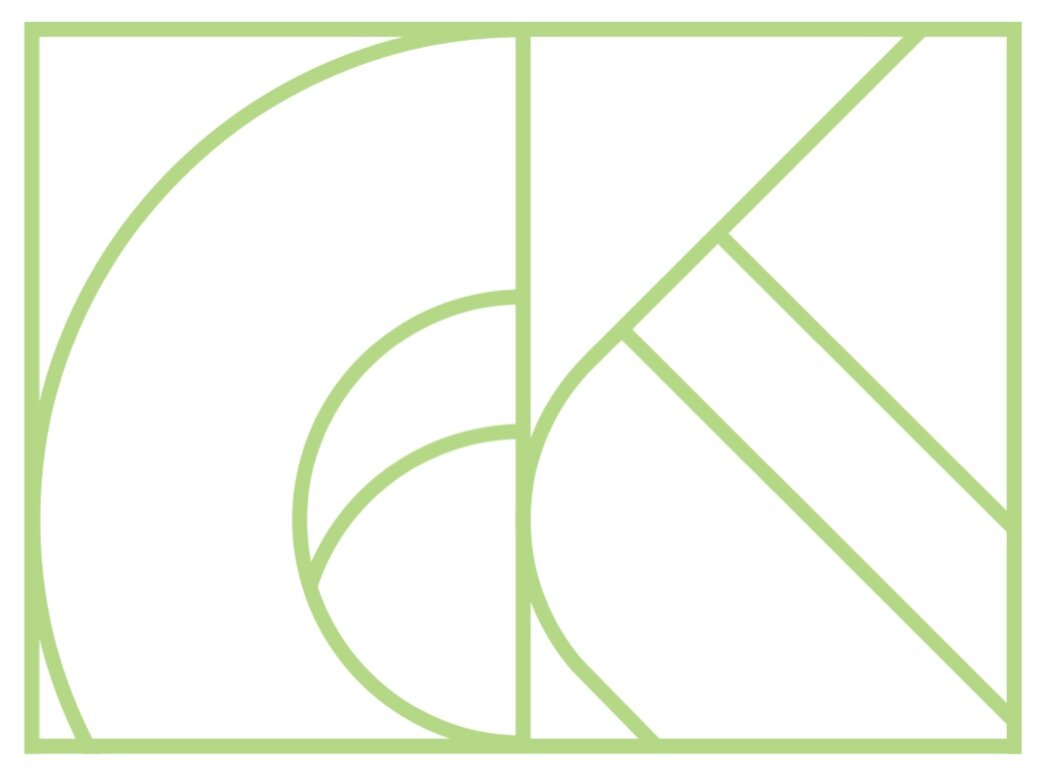Modifications for common injuries - Part II
I was listening to Katy Bowman’s podcast over at Nutritious Movement, and loved her advice to someone who wanted to keep moving her body, but had plantar fasciitis (a painful inflammation of the fascia on the bottoms of the feet). With plantar fasciitis, she couldn’t keep up her usual walking. Katy’s advice? Get down on the floor! Roll around! There are so many other body parts you can move, move those!
I love Pilates for how versatile it is – it’s a great way to keep all healthy parts of you moving and strengthening! Last month, we looked some ways we work with low back pain and carpal tunnel syndrome at Corpo Kinetic. This month, we’re looking at two additional common sites of concern: knee and neck pain. We’ll look at how we can modify challenging exercises to take stress off of an area while still strengthening the rest of the body. We’ll also look at some orthopedic body work techniques and gentle rehabilitative Pilates exercises designed to help an injury get better.
Knee Pain
Knee pain sometimes comes with a diagnosis of patellar femoral syndrome from your doctor. Whether diagnosed or not, if your knees hurt you know it! Often your knees will talk to you as you go up or down stairs, when you have to kneel or get down to the floor, or after higher impact exercises such as running.
Traditional Pilates exercise: Squats!
Squats are an excellent exercise which strengthens the muscles which support the knees. If your knees are healthy and happy, getting into this deep squat with the balance challenge of the springs is a good thing to do to keep them so, but if you have knee pain the deep squat may aggravate the problem.
Modified Pilates exercise
If your knees need more support, a smaller squat with the more stable push through bar can be a great way to strengthen the muscles of the legs, adding support to the knees. A ball between the inner thighs can help the knee track properly, avoiding the pain on the inside of the knee as the squat deepens.
Rehab: Orthopedic Bodywork
Sometimes knee pain is caused by a poorly tracking kneecap, or patella. If there is too much tension on the quad muscle on the outside of the thigh, that can pull the kneecap to the side, causing grinding and discomfort at the kneecap. Orthopedic bodywork can release excess tension, allowing the kneecap to glide more freely.
Rehab: gentle and specific Pilates exercise
Proper knee alignment during movements such as squatting and climbing stairs is key to avoiding knee pain. If the muscles on the outsides of your hips are weak or not activating properly, your knees will drift towards your midline as you bend your knees, and that’s not a happy place for them to be. This exercise is essentially doing a one-legged squat while laying down – which takes the load of gravity off the knee, and allows you to focus on good alignment throughout the movement. Laying on your side also puts those muscles on the outsides of your hips under a particular load so that it’s easier to target them and build strength without pain.
A Pain in the Neck!
Whether caused by a specific injury such as whiplash or a general tension pattern from a lot of time at the computer, neck pain can be debilitating – in some cases leading the headaches, in others a reduced range of motion, or the inability to turn your head fully to one side.
Traditional Pilates Exercise: The Hundreds!
Remember the hundreds from our last post? The hundreds is a traditional Pilates ab buster, but one which can be aggravating when working with injury. In the case of neck pain, holding your head up against gravity can strain tight muscles. If all you’re feeling while you’re trying to strengthen your core is tightness is your neck, you aren’t getting the benefit out of the exercise. Time to modify!
Modified Pilates exercise
Placing a magic circle behind the head allows you to relax the weight of the head into the support. The neck is free and easy, while the abdominals work like crazy to hold the weight of the head, shoulders, and arms off the floor. Once the neck is supported and relaxed, you can focus on the purpose of the exercise – abs!
Rehab: orthopedic bodywork
If your neck has been carrying a lot of tension, Active Release Technique is a great modality which incorporates an active stretch with manual therapy applied to the tightest fibers. Releasing chronic tension in your neck can help your shoulders and upper back feel better and move better as well.
Rehab: Gentle and specific Pilates exercise
Key to resolving neck pain is proper shoulder stabilization so that every action we do with our arms doesn’t translate up into tension in the neck. This exercise teaches shoulder mechanics and helps strengthen the muscles which stabilize the scapula on the ribcage. When these are strong, our arms can connect into our trunk, and our neck can rest free and easy on top.
That’s it for this month!
If you are considering Pilates and are curious about where to start, give us a call at 510-463-1473. We’re happy to chat with you to see if we might be a good fit.
Let’s Move!
Book a group class or private session to use what you’ve learned:









